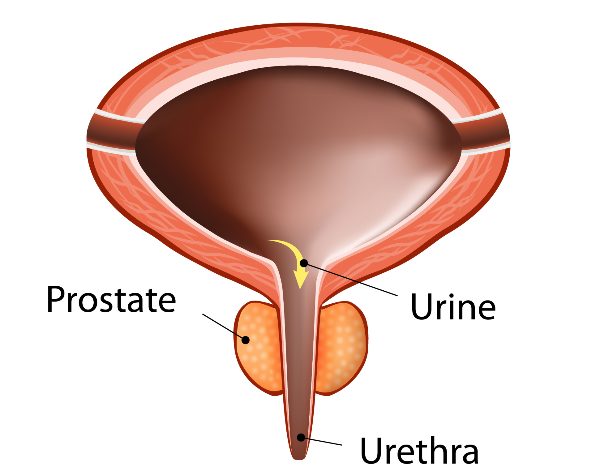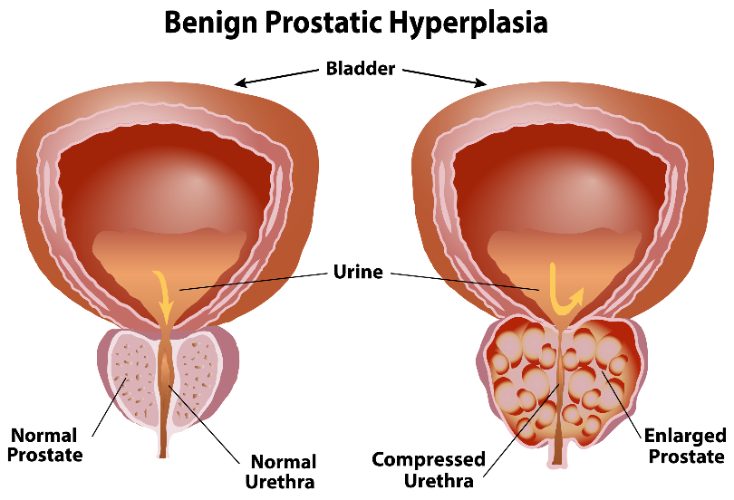PROSTATE ARTERY EMBOLISATION MELBOURNE
ENLARGED PROSTATE TREATMENT
Learn about Prostate Artery Embolisation including the procedure, benefits, risks and more:
PROSTATE ARTERY EMBOLISATION MELBOURNE
Source: Dr Philip Chan – MBBS, MMed (Radiology), FRANZCR, EBIR.
Interventional Radiologist.
WHAT IS THE PROSTATE GLAND
What is the prostate gland – Found in the male anatomy, the prostate gland is a small, walnut-shaped gland that is located below the bladder that surrounds the urethra (the tube through which urine flows out of the body).
The prostate gland is an essential part of the male reproductive system and plays a crucial role in male fertility and semen production.
An enlarged prostate, also known as benign prostatic hyperplasia (BPH), is a common condition in aging men where the prostate gland grows larger than its normal size. As the prostate enlarges, it can cause narrowing of urethra causing Lower Urinary Tract Symptoms such as frequency, weak stream, dribbling, straining, incomplete emptying, sense of urgency and night time urination.
These symptoms can have a significant negative impact to a man’s quality of life.

Source: Mayo Clinic – Prostate Gland
WHAT IS A PROSTATE ARTERY EMBOLISATION (PAE)
What is Prostate Artery Embolisation (PAE) – Prostate Artery Embolisation (PAE) is a minimally invasive procedure used to treat benign prostatic hyperplasia (BPH), or an enlarged prostate. BPH is a noncancerous enlargement of the prostate gland.
PAE is undertaken by an interventional radiologist and involves inserting a catheter into an artery, usually through the groin or wrist, and guiding it to the arteries supplying the prostate. Tiny particles are then injected to block blood flow to specific areas of the prostate, causing it to shrink and relieve symptoms of BPH.
PAE is performed under local anesthesia and may be an effective option for patients wishing to avoid or are unsuitable for traditional surgery.

Source: John Hopkins Medicine – Prostate Artery Embolisation
WHO IS A PROSTATE ARTERY EMBOLISATION FOR
A PAE may be suitable for you if you have:
Enlarged prostate gland
Lower urinary tract symptoms which may include – Frequently needing to urinate, weak stream, dribbling, straining, incomplete emptying, sense of urgency and night time urination.
Urinary symptoms that are impacting your quality of life
Wish to avoid a major operation.
A Prostate Artery Embolisation also offers fewer risks of complications like incontinence, retrograde ejaculation or erectile dysfunction, involves shorter recovery time, and preserves prostate function making it a suitable alterative treatment for an enlarged prostate.
WHAT HAPPENS DURING A PROSTATE ARTERY EMBOLISATION
A Prostate Artery Embolisation is a minimally invasive operation (a procedure using techniques that limit the size and number of incisions required) that is performed through a 2-3 mm hole through an artery in the wrist or groin.
After numbing the skin, your Interventional Radiologist inserts a microcatheter (a small hollow plastic tube) that is carefully navigated into the prostate arteries under image guidance. Once in position, microscopic particles are injected until the artery is completely blocked. This procedure starves the prostate gland of blood supply, with the objective to shrink it down in size allowing the urethra to open up and urine to flow more normally.
The operation typically takes 1-2 hours, and can be safely performed under sedation and local anaesthesia.
Preparation – Patients are asked to prepare for an overnight stay in hospital (some patients may be able to go home the same day) and fast for 6 hours before the procedure. Some medications, such as blood thinners, may need to be paused. More investigations may be required such as blood tests, ultrasound or scans.
Your doctor will give you specific instructions based on your unique situation. Hospital information and relative paperwork will be supplied to you by the WIRES Radiology team and admitting hospital.
RECOVERY – WHAT TO EXPECT AFTER THE PROCEDURE
Recovery – Following the embolisation, most patients stay overnight in hospital for observation and a trial of void (to test if the patient is able to urinate normally without a catheter).
Avoid driving for 24 hours and limit strenuous activities for at least a week.
Symptoms – Your symptoms will likely worsen before they improve. You will likely experience painful urination, urinary frequency and pelvic cramps, worst in the first 12-24 hours. You may also notice blood in your urine, semen or faeces for up to 14 days.
Up to 20% men may lose their ability to urinate after a PAE and require a temporary urinary catheter. If this is the case, you will be discharged home with a catheter and return after two weeks for a trial of void.
You may experience a phenomenon called post embolisation syndrome. This is caused by the body’s reaction to the operation. Patients often feel fatigued, have low grade fever, nausea, vomiting, low appetite, generalised muscle and joint aches – similar to having a cold without the head symptoms. These are easily managed with paracetamol and ibuprofen, and should resolve after 7-14 days.
ADVANTAGES OF PROSTATE ARTERY EMBOLISATION
A prostate artery embolisation:
Utilises minimally invasive technique – Minimally invasive procedures use small incisions, specialised equipment and image guidance to access and treat problems deep inside the body. This may mean fewer bleeding and infection risk, a shorter hospital stay, quicker recovery, and smaller scars
Provides relief from BPH symptoms without major open or traditional surgery.
Offers a potentially shorter recovery time and fewer potential complications than traditional prostate surgeries.
Offers most men a significant improvement in lower urinary tract symptoms, often with no impact on sexual function or continence, leading to high satisfaction rates among patients.
FREQUENTLY ASKED QUESTIONS
Most patients recover quickly after a Prostate Artery Embolisation, with many resuming normal activities within 1 -2 weeks. You should avoid strenuous activities for a 7-14 days and keep the dressing on the access site for two days.
Your doctor will be able to give you personalised recovery advice based on your specific situation.
Immediately after a Prostate Artery Embolisation, the tissues respond with inflammation resulting in temporary urinary track irritation, burning pain with urination, frequent urge to urinate with small volume discharges and sensation of incomplete bladder emptying after urination.
These symptoms improve gradually over the next 1-2 weeks as the inflammation subsides and the tissue heals. Medications will be prescribed to help relief these temporary symptoms as the prostate heal. As the prostate gland shrinks over the course of 1-2 months most patients see an improvement in urinary symptoms that can last for years.
Since PAE works different to traditional surgery, this procedure reduces the risks of urinary incontinence, impotence and retrograde ejaculation.
Regular follow-up appointments will help monitor your progress.
Prostate Artery Embolisation carries some risks like all medical procedures, which may include but not limited to:
- Bruising or bleeding at the catheter site
- Mild pain or fever following the procedure
- Temporary urinary retention or infection
Your symptoms will likely worsen before they improve. You will likely experience painful urination, urinary frequency and pelvic cramps, worst in the first 12-24 hours. You may also notice blood in your urine, semen or faeces for up to 14 days.
In rare cases, there may be issues with the arteries or unintended embolisation of nearby organs. Your interventional radiologist will thoroughly explain these risks and answer any questions you have before proceeding.
The Prostate Artery Embolisation procedure is generally well-tolerated. You may feel a slight pinch during local anaesthesia, but most of the procedure is painless. Discomfort afterward typically resolves within one to two weeks.
Your doctor can provide more details on what to expect during and after Prostate Artery Embolisation.
Common side effects include mild pain, fever, and temporary discomfort. Serious complications are rare but can include issues with the arteries or surrounding organs.
Your doctor will fully explain the procedure and any potential side effects and mitigation strategies to make you as comfortable as possible during and after the procedure.
Prostate Artery Embolisation has minimal impact on sexual function, unlike some surgical treatments for an enlarged prostate. With a lower risk of sexual side effects, Prostate Artery Embolisation is a preferred option for many men if suitable for the procedure.
Your doctor will be able to explain your suitability for the procedure.
A study published in 2017 of more than 1,000 men highlights the success rates of prostate artery embolisation over several years. The findings indicate that the treatment effectively reduces the symptoms associated with an enlarged prostate and improves patients’ quality of life.
The results showed that Prostate Artery Embolisation had a success rate of over 90% in providing symptom relief and improving urinary flow for patients with an enlarged prostate. Additionally, the benefits were sustained over a long period, with patients experiencing continued symptom improvement for up to five years after the procedure.
Study from Interventional News – 8th March 2017 – Visit Interventional News.
Most studies indicate that Prostate Artery Embolisation results last approximately three to four years. However, it’s not unusual for symptom relief to last longer.
Source: UNC Health


